| 1 | One of Brazil’s most dangerous snakes |
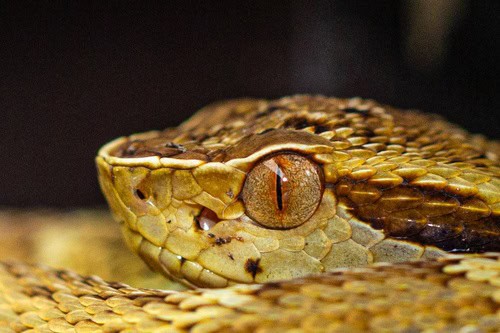
The jararaca (Bothrops jararaca) is a venomous snake of southern Brazil, Paraguay and Uruguay, which holds no grudge against humans, but doesn’t have an ounce of warmth for them either. This viper measures 70-120cm, with rumours of up to 160cm, and a fairly thick body. They’re mid length for their Bothrops lancehead family, falling well short of the jararacussu (also southern Brazil) at up to 220cm.
The natural habitat of jararacas is Atlantic forest, and grassland immediately adjacent, with plenty of knee high vegetation to lurk in. Jararacas are not the most lethal venomous snake of all time – the most common bite symptoms are swelling, edema, blistering, and uncontrollable bleeding. Its cousin the jararacussu is estimated to have 6 times more lethal venom per drop. Yet jararacas are still capable of killing, usually via kidney failure, rather than the lung failure of coral snakes.
Jararacas have an exceptionally accurate strike. In a 1990s experiment when they were pitted against rodent prey, “Only once did a snake miss a strike“. A 2007 study tested 5 Bothrops lancehead species, and found a failed strike rate of just 7.6%. The crossed pitviper (5.0%), jararacussu (8.6%), and Bothrops pauloensis (2.1%) were just as accurate, and the most accurate was Bothrops moojeni, a snake of riverside gallery forests, which had 0 failed strikes.
| 2 | Hotspot: São Paulo |
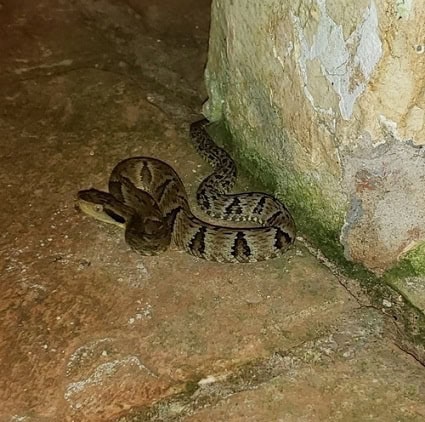
While jararacas are missing from the majority of Brazil, including the entire Amazon, they’re easily the most common viper in the southeast, and nowhere more so than São Paulo. Residents of Earth’s 4th largest city (population over 20 million) are constantly stepping over jararacas, looking suspiciously at long grass patches and deciding wisely to walk around them. Those in the densest slums and housing estates fare better, but anywhere in São Paulo with remnant forest patches, such as nature reserves or parks, are liable to contain a jararaca. In some parks, they make up 70% of snakes observed.
A 2011 survey found that across São Paulo, jararacas were the 3rd most common snake, at 16% of sightings. In 1st and 2nd were the Guibe’s flame snake (24%) and Brazilian slug-eating snake (21%), both harmless.
Cities have even helped the jararaca to grow larger. A 2018 study compared two areas: Parque do Estado, a reserve within São Paulo itself, and Parque Estadual da Cantareira, a nature reserve 16 times larger outside the city limits. It was far easier to find “giant” jararacas in Parque do Estado, with individuals regularly breaking through 1.5 metres. These city dwellers lived on an island, not surrounded by ocean, but by concrete. This prevented the jararaca’s large predators from surviving, allowing them to reach new heights.
| 3 | Not found in the Amazon |
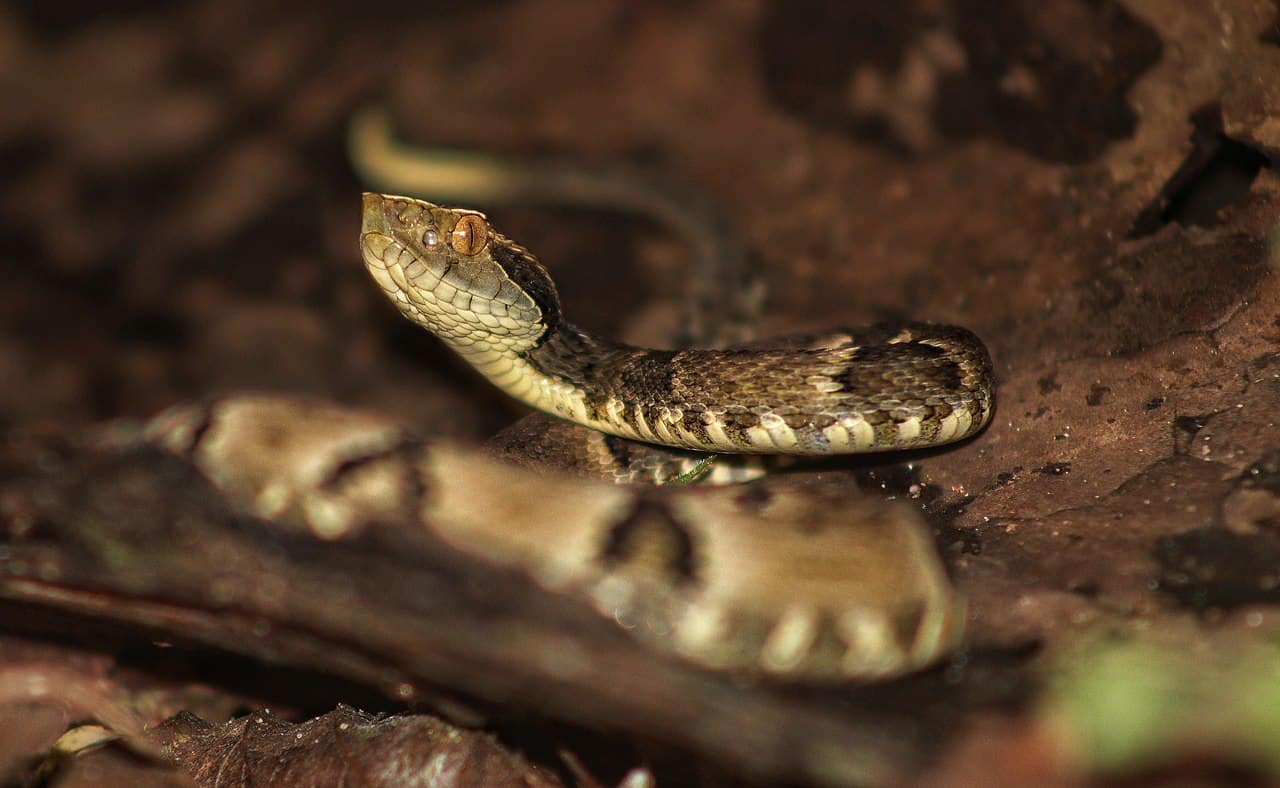
Jararacas completely dominate the snakebite statistics of southern Brazil. They have both the power and the will, whereas coral snakes are deadlier, yet shier and calmer. A survey reviewed snakebite data from 1981 to 1990, in São Paulo’s large Hospital Vital Brazil. This encompassed 3,139 patients bitten by Bothrops members, of which 1412 were identified to the species level.
10 were bitten by jararacussus, 11 by Neuwied’s pitvipers (B. neuwiedii), and 2 by Bothrops moojeni. But these paled in comparison to the jararaca at a staggering 1378 bites, 97.6% of those identified. The grassland-loving crossed pitviper caused 2 bites, and the white-tailed pitviper (B. leucerus) just 1.
Because southeast Brazil is the most highly populated region, jararacas also top the statistics for Brazil as a whole, though not quite as crushingly. From 1902 to 1946, 6601 snakebites were recorded in Brazil, with 3446 caused by jararacas. Fortunately, the fatality rate was just 0.7%, partly due to this species’ low venom yield of 25-35mg per bite, with 70mg required to kill a human.
| 4 | Symptoms include bleeding gums |
The study also revealed the typical symptoms of a jararaca bite. Of the 3139 patients, 95.6% experienced pain, and 95.4% swelling. 56.1% experienced ecchymosis, discolouration of the skin caused by bleeding underneath. Blisters erupted in 13.8% of patients, and necrosis in 16.5%, the rotting and sloughing of healthy skin.
The main systemic effect was spontaneous bleeding, at 12.3% of patients. 57.9% of patients experienced some sort of blood coagulation disorder. While other Bothrops species were included in the 3139, jararacas accounted for such a vast proportion that these results apply mainly to them.
Bleeding gums is a commonly reported symptom of jararaca bite. Necrosis, meanwhile, is more likely the larger the jararaca becomes, according to another old São Paulo study. Female jararacas possess more lethal venom than males. Female venom was more haemorrhagic and possessed more hyaluronidase, which dissolves the structural element hyaluronic acid in the skin. Male venom had stronger coagulant and myotoxic (muscle-assaulting) capabilities.
| 5 | Diet: mammals plus amphibians |
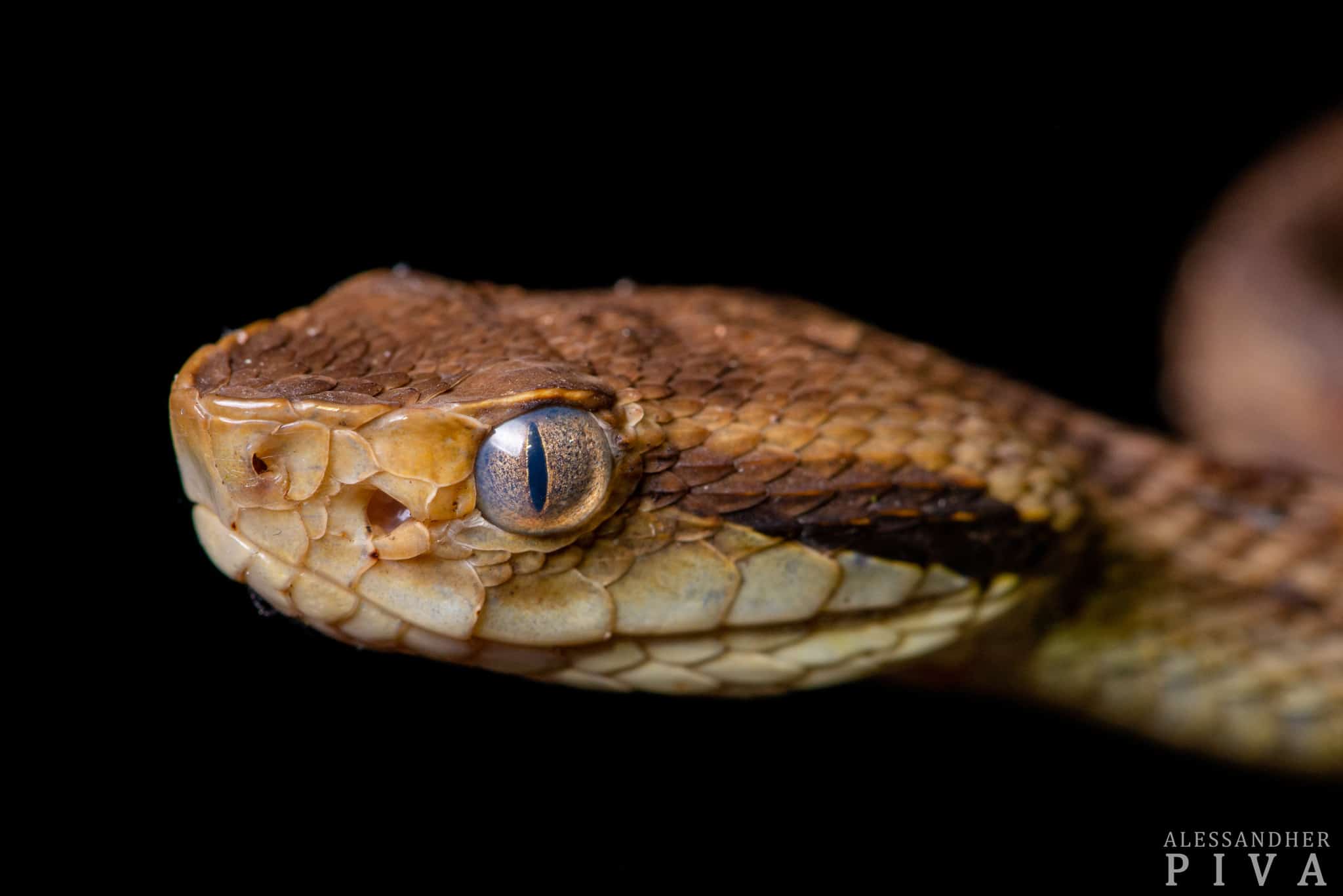
Jararacas focus heavily on mammals, though they don’t eat mammals exclusively like their relative the crossed pitviper. A study on 45 jararaca prey items found the following diet breakdown: 71.1% mammals, 18.8% frogs and toads, 2.2% centipedes, 2.2% lizards and 6.7% birds. No snakes were recorded in their diet.
Local creatures they’re confirmed to prey on include Atlantic forest water rats, hairy-tailed bolo mice and Brazilian torrent frogs. Jararacas undergo a large ontogenetic shift in their diet, AKA a natural change in preference with age. Juveniles eat up to 75% frogs and toads, before mammals take over in adulthood. Juveniles also possess a caudal luring trick that adults lack – waving a bright tail tip resembling insect larvae which is especially attractive to frogs.
Jararacas have numerous bird predators. Roadside hawks have been observed sitting in their roosts calmly, with a half-eaten jararaca dangling from their talons. White-necked hawks seize them by the neck and fly off to a safe branch perch 3 metres high. Jararacas are almost certainly preyed on by laughing falcons, southern Brazil’s most infamous snake-eating bird.
| 6 | Hunting strategies (usually successful) |
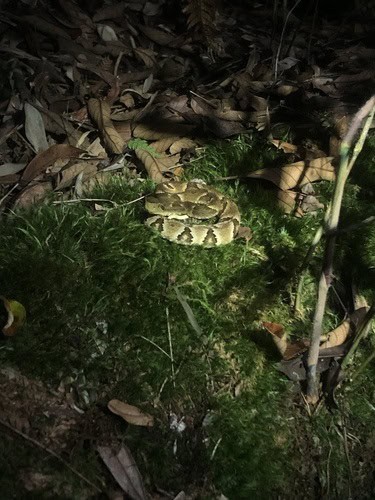
Jararacas have a typical viper hunting strategy. They’re ambush predators which are intelligent enough to position themselves directly adjacent to well trodden mammal runaways, typically near overgrown vegetation that disguises their camouflaged bodies. This is partially why many humans fail to notice them.
A 1990s report observed the jararaca’s hunting method in extreme detail. The author staged 17 encounters between various rodent prey, and 11 adult jararacas measuring 80-120cm. They found that a jararaca’s hunt had 6 stages: orientation towards prey, approach, strike and release, trailing, inspecting and swallowing.
In phase 1, the jararaca noticed the approaching rat or mouse. It remained coiled, extending only its neck or forebody closer to its oblivious prey. It flecked its tongue relatively calmly, at 10-20 flecks per minute. The jararaca always unleashed its strike at distances of 5-20cm, waiting patiently until its prey was close enough.
The jararaca aimed for a specific body part, the shoulder, which they targeted in 11/17 cases (71.1%). Only 1 of 17 jararaca strikes failed to hit its target.
| 7 | Surprisingly patient |
Once venom was injected, the jararaca immediately opened its jaws wide, to release its prey. This was followed by a sharp increase in tongue flecking: 40-50 flecks per minute.
The jararaca then waited 15-140 seconds to begin following its prey, allowing ample time for the venom to spread. The author theorised that this gap was also to scan the surroundings for its own predators. As the jararaca approached its prey, it made horizontal sideways scanning movements. It seemed to follow the prey via scent, possibly the scent of its own injected venom.
When it found the prey, it performed analysis via tongue flecking, or a gentle nudging with its snout, perhaps to check if it was dead, as living rodents can claw back viciously against snakes. Finally, the jararaca swallowed, which was headfirst in 16 of 17 cases. It took the jararacas 125-300 seconds to fully swallow their prey, and from the first encounter with a mouse to final swallowing, the hunting sessions ranged from 8 minutes to 20 minutes.
| 8 | Hates to be interrupted |
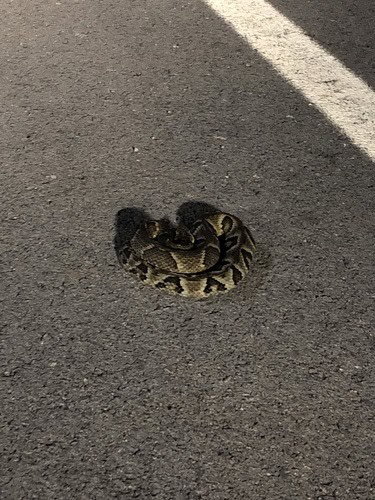
When encountered in the wild, a jararaca’s first reaction is not to attack, but to freeze. In overgrown vegetation, their camouflage is so superb that even explorers concerned about them can walk right past. Moving would spoil this. If caught in the open slithering, freezing is still their first response, followed by rapid flight, sometimes while buzzing their tail against forest matter.
Jararacas are less vicious than their overwhelming snakebite statistics suggest, but be warned: they hate to be disturbed while basking, while warming their bodies in the sun. This report found that before launching real strikes, jararacas usually made warning signs, but while basking, they often skipped all warning, and instantly launched a savage assault. Even jararacas value their forest chillaxing sessions – don’t get in their way.
Some fleeing jararacas also used a method similar to sidewinding, particularly when over smooth, open ground. This was most common in juveniles and slender jararacas. Sidewinding is most common in desert snakes, to minimise contact with hot sands, but apparently jararacas can summon up the skill occasionally. What’s more, they’re smart enough to identify specific terrains where it might be useful.
| 9 | Mostly nocturnal |
If you must embark on a demented quest to find this venomous killer, there’s certain rules that jararacas follow, as they’re a fairly predictable snake. In a study from the Santa Genebra reserve in São Paulo state, dusk and early night was easily their favourite time to move. Of 91 jararaca sightings, 72 (79.12%) were spotted moving from 18:20-20:30pm. 12 were spotted moving from early night to dawn, and a further 7 during various times at the day.
This species isn’t strictly nocturnal, but mostly nocturnal. Jararacas also have clear activity patterns by season. Bites are by far the fewest during Brazil’s dry season, June to August. They peak during the wettest, warmest period: December to February. This is called a unimodal active season – one with a single peak of annual activity, rather than two.
In the Santa Genebra reserve, December to February contain 50.4% of annual rainfall, or 1365mm. Over half of all jararaca sightings were during these three months.
| 10 | Small home territories |
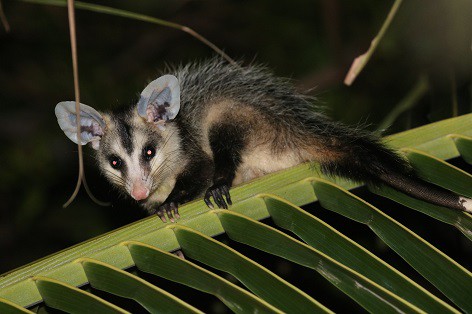
If you’re really lucky, you may even bump into the same jararaca that bit you on your last expedition. The same Santa Genebra study found that upon second observation, 17 of 18 female jararacas were within 30 metres of where they were originally spotted. A rare exception was an adult female spotted basking 200 metres away.
Males, meanwhile, were more adventurous, as only 3 were recaptured following the initial sighting. One was found a full kilometre away 25 days later, a second 20 metres away 15 days later, and another 60 metres away a full 24 months later. It’s possible that the latter had embarked on an epic expedition like the first, but then returned to its old hunting grounds later on. Either way, female jararacas tend to stay within a narrow home range, while males are less predictable, but still have loyalty to areas.
Another fascinating jararaca fact is that the local white-eared opossums are immune to their venom. In the Brazilian wild, opossums simply wander up to jararacas, who recognise them as a mortal enemy, seize them by the neck, and shake them vigorously around. This exhausts the jararaca so much that it can’t fight back. Then the opossum sits comfortably on its hind legs and begins ripping the snake to pieces, starting with the head. Further north, Virginia opossums are resistant to west diamondback rattlesnake venom.
